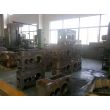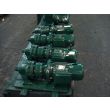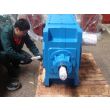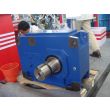dering informationTruLine flange coupling RFK Si B4-CH-19B Bevel-helical gear reducer B4
In stock
SKU
B4-CH-19B
$145,714.29
Flender/Flender Gear Units/Bevel-helical gear reducer B4
the .. gear industry are numerous. They include pricing, research and development, access to distribution and supply networks, labor cost and availability, raw materials, government involvement and regulation, access to capital markets, and product liability. Other factors affecting the ability
and availability, raw materials, government involvement and regulation, access to capital markets, and product liability. Other factors affecting the ability  of companies to compete are the level of investment in modern equipment and the adoption of advanced technologies. When these
of companies to compete are the level of investment in modern equipment and the adoption of advanced technologies. When these  factors are considered in the aggregate, it appears that .. gear producers lag behind the major foreign producers in terms
factors are considered in the aggregate, it appears that .. gear producers lag behind the major foreign producers in terms  of overall international competitiveness. Pricing Relationships The average price of all domestically produced gears and gear products rose faster than the Producer Price Index (PPI) in the United States during 1-8, but less than the overall price level, as measured by the Gross National Product (GNP) deflator.1 During 1-8, prices for gears and gear products included in SIC Industry 3 increased by 6 percent and by an additional 8 percent in 1. The PPI for motor-vehicle transmissions rose by 6 percent during 1-8 but declined to the 1 level in 1. The following tabulation shows the average annual .. PPI, as reported by the .. Bureau of Labor Statistics, for gears and gearing classified in SIC industry 3, and motor vehicle transmissions, classified in SIC industry 3(pt), during 1-8 (1 =1.0): PP1 for gears and gear products (ex- PP1 for cept motor-vehicle motor-vehicle Year transmissions) transmissions 1 1.0 1.0 1 1.2 9.6 1 1.8 1.6 1 1.9 1.5 1 1.4 1.5 During 1-8, the price of .. gears rose more quickly than those produced in West Germany, France, and Belgium, but at slower rate than gears and gearing manufactured in Italy and the United Kingdom? However, the lack of detailed price data makes the comparison of ..-produced gears and gearing with .. imports difficult. Gears are often ' Yearly wholesale prices in the United States increased slightly over 3 percent during 1-8. The GNP de
of overall international competitiveness. Pricing Relationships The average price of all domestically produced gears and gear products rose faster than the Producer Price Index (PPI) in the United States during 1-8, but less than the overall price level, as measured by the Gross National Product (GNP) deflator.1 During 1-8, prices for gears and gear products included in SIC Industry 3 increased by 6 percent and by an additional 8 percent in 1. The PPI for motor-vehicle transmissions rose by 6 percent during 1-8 but declined to the 1 level in 1. The following tabulation shows the average annual .. PPI, as reported by the .. Bureau of Labor Statistics, for gears and gearing classified in SIC industry 3, and motor vehicle transmissions, classified in SIC industry 3(pt), during 1-8 (1 =1.0): PP1 for gears and gear products (ex- PP1 for cept motor-vehicle motor-vehicle Year transmissions) transmissions 1 1.0 1.0 1 1.2 9.6 1 1.8 1.6 1 1.9 1.5 1 1.4 1.5 During 1-8, the price of .. gears rose more quickly than those produced in West Germany, France, and Belgium, but at slower rate than gears and gearing manufactured in Italy and the United Kingdom? However, the lack of detailed price data makes the comparison of ..-produced gears and gearing with .. imports difficult. Gears are often ' Yearly wholesale prices in the United States increased slightly over 3 percent during 1-8. The GNP de| Model Type | Bevel-helical gear reducer B4 |
|---|---|
| Gear Type | Bevel Helical Gear |
| Weight (kg) | 6800.000000 |
| Ratio Range | 1 : 80…315 |
| Low Speed Output | Solid shaft without parallel key |
| Nominal Torque | 300000 Nm |
| Mounting Arrangements | Horizontal mounting position |
| Manufacturer | Flender Bocholt |
| Country of Manufacture | China |
| Data Sheet & Drawings | dering informationTruLine flange coupling RFK Si B4-CH-19B Bevel-helical gear reducer B4 |






